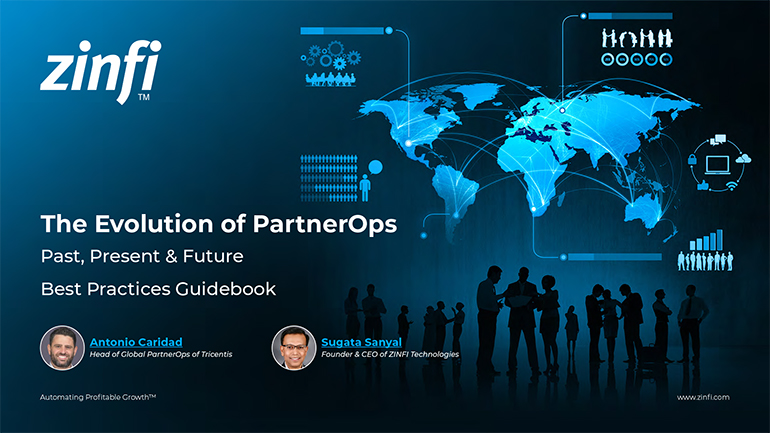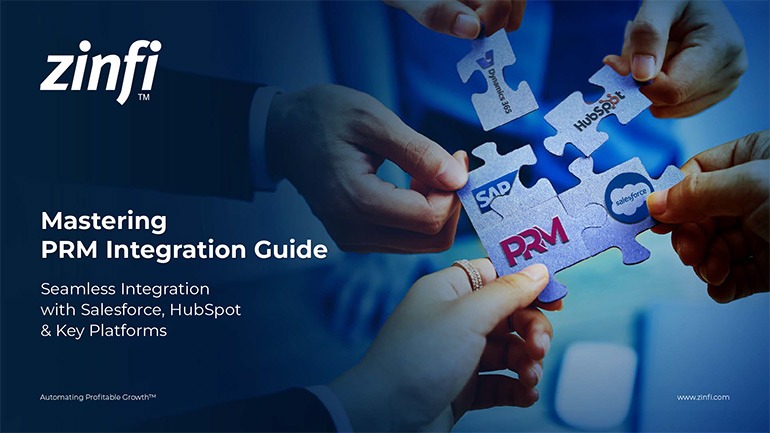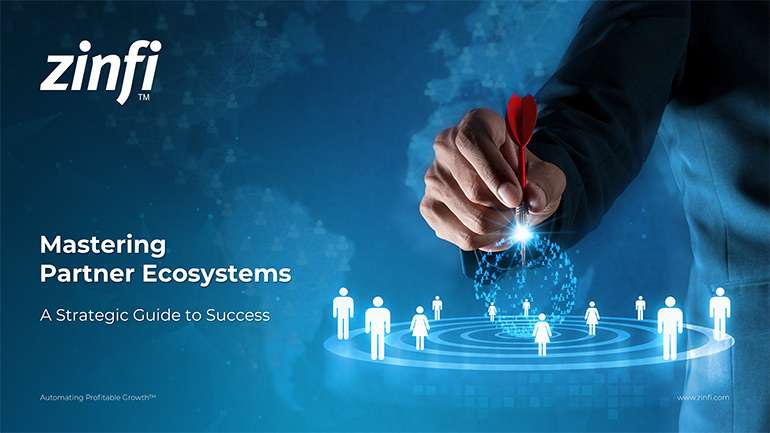Best Practices Articles

PartnerOps: How Partner Operations Became Strategic
PartnerOps started as a simple way to sell products. At first, companies used resellers to grow fast. They cared more about sales numbers than long-term plans.
Over time, things changed. Now, PartnerOps is about building strong relationships. It is also about helping partners grow and succeed.-
Early Days of Partner Operations
In the beginning, companies worked with resellers and distributors. These partners sold the company’s products in many places. This helped companies reach more customers. But it also caused problems.
Companies could not control how partners treated customers. They could not see if partners were doing a good job. There was no plan or system to manage partner operations.
Most companies did not use any tools to help their partners. They used emails and spreadsheets. These methods were slow and often confusing. The process did not support long-term success.
Still, this system helped companies expand in the early days. It was the start of what would become modern PartnerOps.
-
Why Segmentation Matters
As companies grew, they realized that the old model was not enough. They needed to change how they worked with partners. They saw that not all partners were the same.
Some partners sold products. Some offered services. Others did both. Companies began to group partners into different types. This helped them offer the right support to each group.
One group was value-added resellers. They sold products but also helped customers set them up. Another group was managed service providers. They gave full support services.
Some partners became system integrators. These partners worked on large projects for big companies. Each group played a special role. Companies had to treat them in different ways.
This change helped PartnerOps improve. Grouping partners made it easier to train them. It also helped companies track their work.
Each partner got the tools and help they needed. This led to better results. It also helped build strong relationships.
-
PRM Tools Transform the Ecosystem
As partner networks grew, managing them became harder. Companies needed better tools. That is when partner relationship management systems, or PRM, came into use.
PRM systems made it easier to manage partner operations. They put everything in one place. This made it simple for companies and partners to work together.
PRM systems helped companies share sales leads. They helped partners register deals. They also made it easy to offer training and rewards.
PRM tools made partner operations faster and more organized. They helped partners get the help they needed without delay.
These systems also helped vendors keep track of what was working. They could see how each partner was doing.
This made it easier to improve the partner program. It also helped partners feel supported. That made them more likely to stay and succeed.
-
Teamwork and Communication in Modern PartnerOps
Today, PartnerOps is about more than sales. It is about teamwork. Companies and partners work together to help customers. They share goals and help each other grow.
Good partner operations include clear communication, helpful training, and fair rewards. They also include planning and working together on sales.
In the modern business world, co-selling has become a key part of PartnerOps. Co-selling means that vendors and partners work together to close deals. This shared effort creates stronger bonds between companies. It also improves results.
When partners feel involved, they put in more effort. When vendors provide support, partners feel confident. This teamwork helps build a successful partner ecosystem.
Another important part of PartnerOps is marketing support. Many partners do not have large marketing teams. They need help creating and sharing content. PRM systems can help with this.
Companies can upload marketing templates and guides. Partners can use them to run campaigns. This support helps partners grow their brand and reach more customers.
-
Real-World Success Stories
Let’s look at how two big companies changed their PartnerOps. IBM used to rely on many resellers. They wanted more control. So they grouped their partners by type.
They also started using PRM tools. This helped them train partners and support them better. It made the whole system work more smoothly.
Microsoft also made big changes. They moved from selling software in boxes to offering cloud services. To do this, they needed better partner operations.
They gave partners training and support. They used PRM tools to help partners sell cloud services. This helped Microsoft grow and made their partners more successful.
-
Why Strong PartnerOps Is Essential
These stories show why PartnerOps is important. When companies support their partners, everyone wins. Partners sell more. Customers get better service. Companies grow faster.
But without good partner operations, things can go wrong. Partners may feel lost. Customers may leave. Sales may drop.
Companies that want to grow should focus on PartnerOps. They should group partners by type. They should give them the tools and training they need.
They should use PRM systems to stay organized. They should also keep track of results and reward good work.
Investing in PartnerOps also helps companies adapt to change. New products, markets, and trends come quickly. Companies with strong PartnerOps can respond faster.
They can update training, share news, and guide partners. This helps partners stay ready and confident.
-
The Future of PartnerOps
PartnerOps will keep changing. New technology will make it even better. Smart tools will give advice and help companies decide what to do next.
These tools will help partners do better and sell more. Companies that use these tools will stay ahead.
In the future, partners and companies will work even more closely. They will share ideas and work as one team. This future starts now. Companies that invest in PartnerOps today will be ready for tomorrow.
Final Thoughts
PartnerOps began with simple resale. Today, it is about smart planning and teamwork. It uses tools like PRM to help everyone succeed. With strong partner operations, companies can grow and build lasting success.
If you want to grow your business, start with PartnerOps. Help your partners. Use the right tools. Plan for success. That is how to win in today’s world.
Best Practices Guidebook
 The Evolution of PartnerOps: Past, Present & Future Best Practices
The Evolution of PartnerOps: Past, Present & Future Best PracticesDownload Guide
 Mastering Channel Sales: Strategies, Best Practices, and Growth Tactics for 2025
Mastering Channel Sales: Strategies, Best Practices, and Growth Tactics for 2025Download Guide
 Winning with Partner Advisory Councils: Best Practices for Partner Engagement & Growth
Winning with Partner Advisory Councils: Best Practices for Partner Engagement & GrowthDownload Guide
 The Future of Partner Ecosystems Best Practices
The Future of Partner Ecosystems Best PracticesDownload Guide
 The AI Revolution: How Technology and Talent are Shaping the Future
The AI Revolution: How Technology and Talent are Shaping the FutureDownload Guide
 Top 105 Partner Management Metrics that Matter Best Practices
Top 105 Partner Management Metrics that Matter Best PracticesDownload Guide
 Mastering PRM Integration Best Practices
Mastering PRM Integration Best PracticesDownload Guide
 Building a Sales Partner Portal with Salesforce Best Practices
Building a Sales Partner Portal with Salesforce Best PracticesDownload Guide
 Building and Managing Partner Ecosystems Best Practices
Building and Managing Partner Ecosystems Best PracticesDownload Guide
 Mastering Co-Marketing and Co-Selling Best Practices
Mastering Co-Marketing and Co-Selling Best PracticesDownload Guide
 Transforming Partner Ecosystems Best Practices
Transforming Partner Ecosystems Best PracticesDownload Guide
 Mastering Partner Ecosystems Best Practices
Mastering Partner Ecosystems Best PracticesDownload Guide
 Mastering Partner Onboarding Best Practices
Mastering Partner Onboarding Best PracticesDownload Guide
 Partner Ecosystem Management Best Practices
Partner Ecosystem Management Best PracticesDownload Guide
 B2B Marketing in the Age of Intelligence Best Practices
B2B Marketing in the Age of Intelligence Best PracticesDownload Guide
 Multi-Partner Co-Selling Best Practices
Multi-Partner Co-Selling Best PracticesDownload Guide
 A Guide to Enhance Channel Sales Efficiency
A Guide to Enhance Channel Sales EfficiencyDownload Guide
 Mastering Affiliate Marketing Best Practices
Mastering Affiliate Marketing Best PracticesDownload Guide
All Guidebooks







